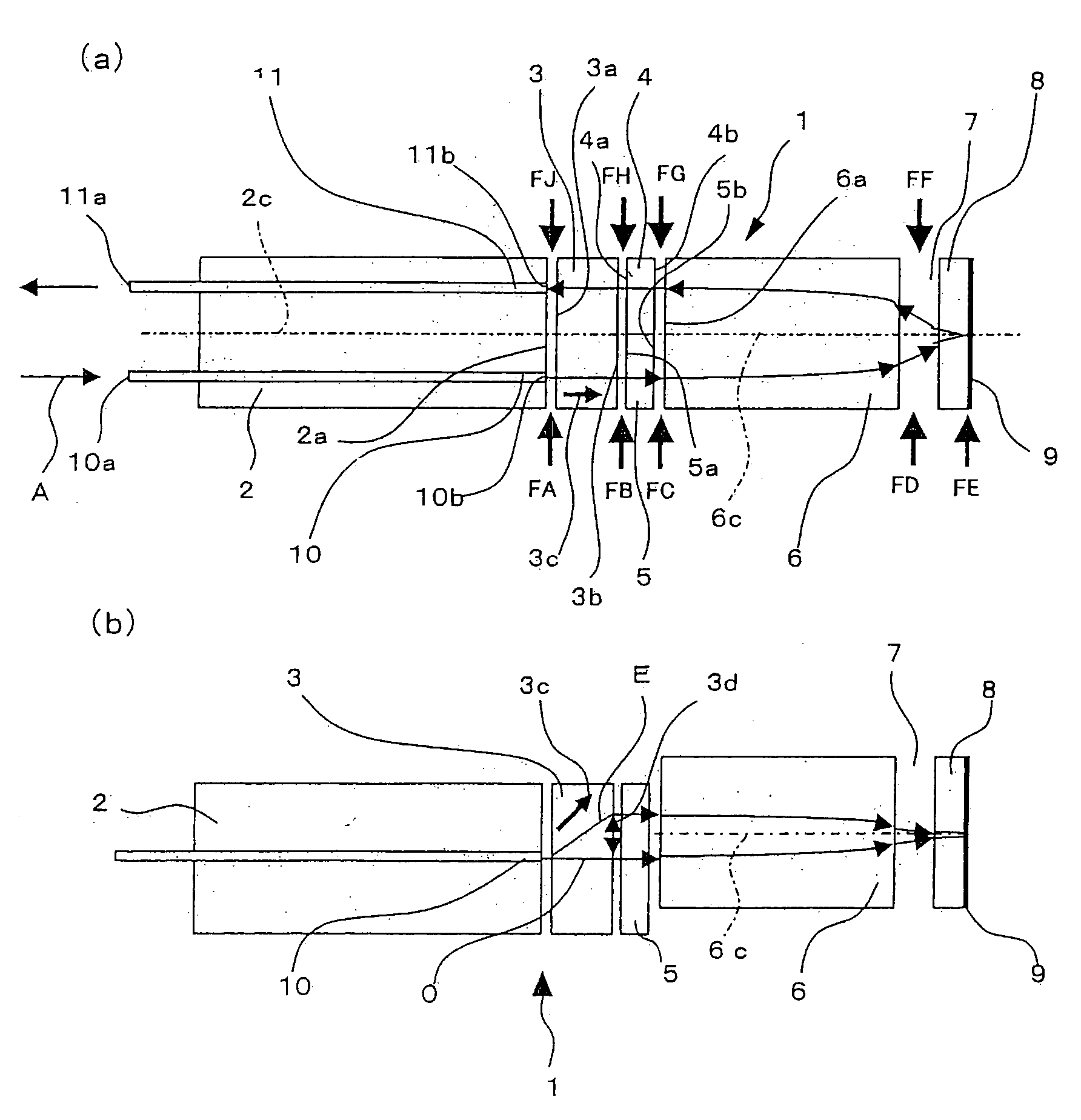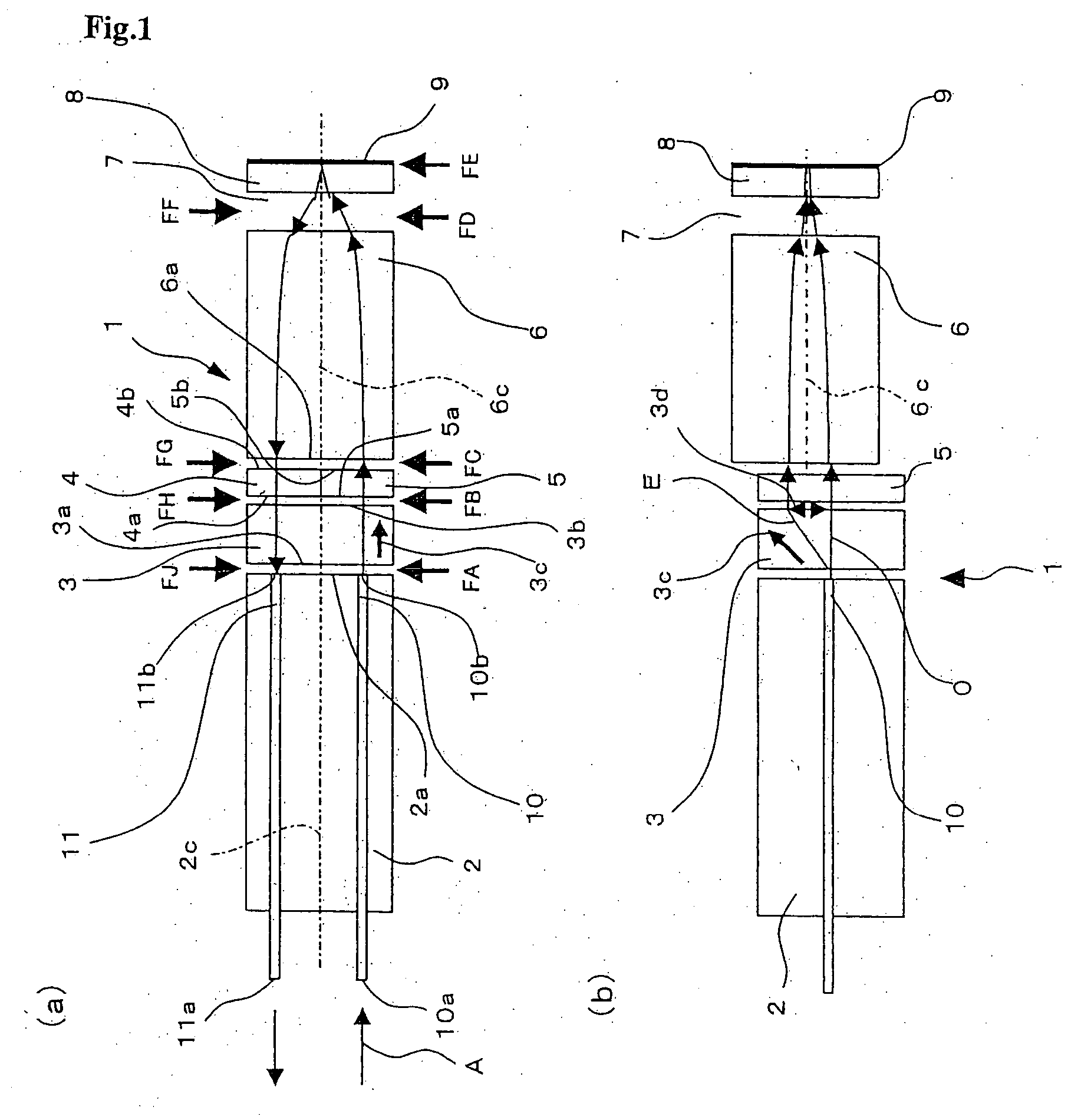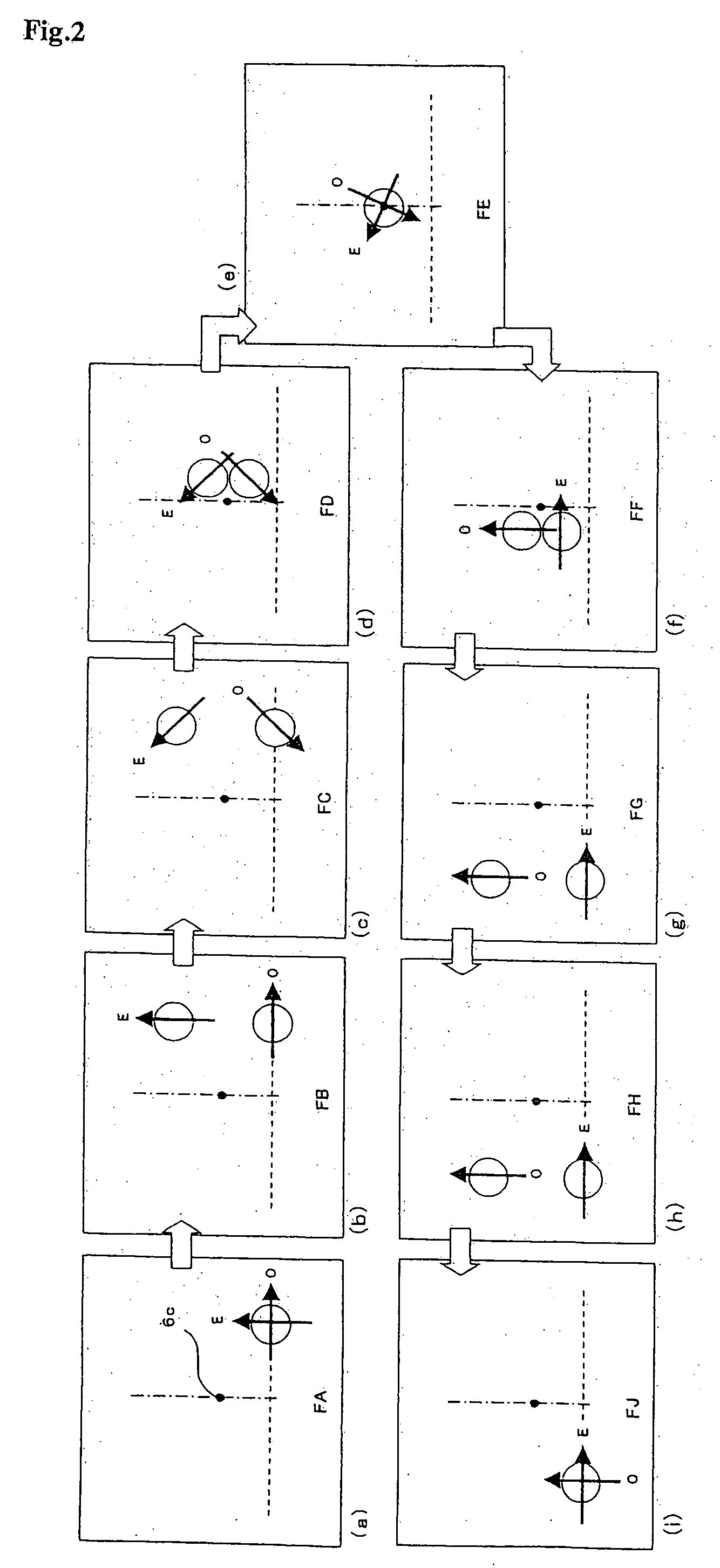In-line optical isolator
a technology of optical isolators and isolators, which is applied in the field of optical isolators, can solve the problems of reducing the size of the optical isolator, degenerating adhesives, and changing characteristics, and achieves the effect of substantially eliminating the dispersion of polarization modes and increasing the optical signal path
- Summary
- Abstract
- Description
- Claims
- Application Information
AI Technical Summary
Benefits of technology
Problems solved by technology
Method used
Image
Examples
first embodiment
[0085] Next, the present invention is described, where an in-line optical isolator according to the present invention is applied to a fiber-optic communication system.
[0086]FIG. 1(a) is the plan view of an in-line optical isolator (1) according to this embodiment and FIG. 1(b) is the side view. The in-line optical isolator (1) is configured with the following elements arranged in the stated order: an optical fiber array (2), a rutile crystal (3), a quartz glass plate (4) and a half-wave plate (5), a focusing rod lens (6), an air gap (7), a magnetized garnet crystal (8) and a total reflecting mirror (9).
[0087] In the optical fiber array (2), optical fibers (10, 11) whose optical axes are parallel with each other, are arranged in parallel and integrated at an interval of 125 [μm]. Optical fibers (10, 11) comprise an input optical fiber that inputs a forward optical signal and an output optical fiber that outputs the forward optical signals that is input from the input optical fiber (...
second embodiment
[0115] Next, the second embodiment is described, where an in-line optical isolator according to the present invention is applied to a fiber-optic communication system.
[0116]FIG. 5(a) is the plan view of an in-line optical isolator (20) according to this embodiment of the present invention and FIG. 5(b) is the side view. In the following description of the in-line optical isolator (20) according to this embodiment, the constituent elements that are identical or equivalent to the constituent elements of the in-line optical isolator (1) according to the first embodiment are given the same codes and their descriptions are omitted.
[0117] The in-line optical isolator (20) is configured with the following elements aligned in the stated order: an optical fiber array (22), a rutile crystal (3), a quartz glass plate (4) and a half-wave plate (5), a focusing rod lens (26), an air gap (7), a magnetized garnet crystal (8) and a total reflecting mirror (9). In this embodiment, the end face (22a)...
third embodiment
[0140] Next, the third embodiment is described, where an in-line optical isolator according to the present invention is applied to a fiber-optic communication system.
[0141]FIG. 9(a) is the plan view of a polarization-independent multifiber optical isolator (30) according to this embodiment and FIG. 9(b) is the side view. The polarization-independent multifiber optical isolator (30) is configured with the following elements aligned in the stated order: an optical fiber array (32), a rutile crystal (3), a quartz glass plate (4) and a half-wave plate (5), a focusing rod lens (6), an air gap (7), a magnetized garnet crystal (8) and a total reflecting mirror (9).
[0142] In the optical fiber array (32), two pairs of optical fibers, the optical fibers (10, 11) and the optical fibers (12, 13), whose optical axes are parallel with each other, are arranged in parallel and integrated at equal intervals of 250 [μm] in the same plane. One optical fiber of each pair (10, 12) comprises an input op...
PUM
| Property | Measurement | Unit |
|---|---|---|
| rotating angles | aaaaa | aaaaa |
| rotating angles | aaaaa | aaaaa |
| wavelength | aaaaa | aaaaa |
Abstract
Description
Claims
Application Information
 Login to View More
Login to View More - R&D
- Intellectual Property
- Life Sciences
- Materials
- Tech Scout
- Unparalleled Data Quality
- Higher Quality Content
- 60% Fewer Hallucinations
Browse by: Latest US Patents, China's latest patents, Technical Efficacy Thesaurus, Application Domain, Technology Topic, Popular Technical Reports.
© 2025 PatSnap. All rights reserved.Legal|Privacy policy|Modern Slavery Act Transparency Statement|Sitemap|About US| Contact US: help@patsnap.com



